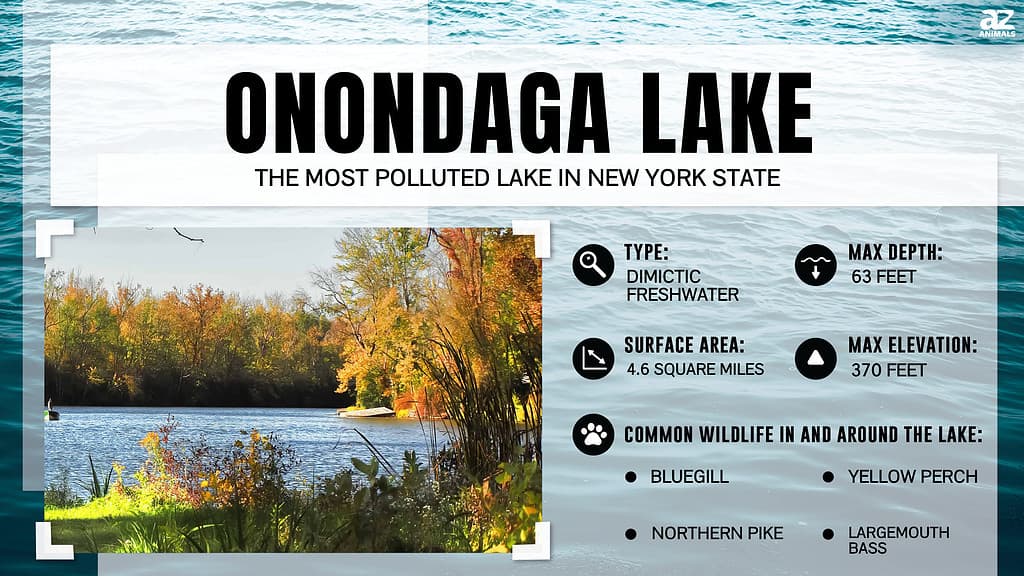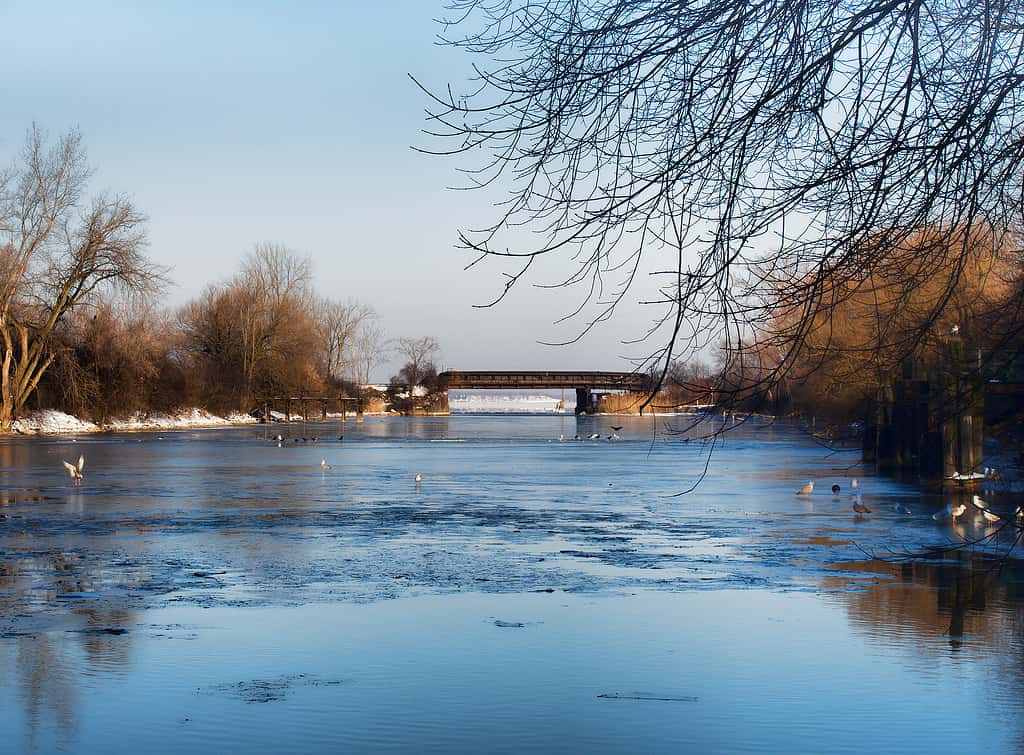When nature is left untouched, it thrives, falling in line with an ecosystem that makes sense for the species present. However, humans require space and amenities, which upsets the balance nature has created. This happens everywhere, from rolling hills to inner city lakes. Discover the most polluted lake in all of New York State, how it got so bad, and what measures are being taken to ensure that the water gets cleaner with each passing year. Learn how wildlife was affected, and what kind of research is being conducted to continue restoring a lake that was once a popular tourist attraction.

Onondaga Lake
In Central New York, there’s a lake that spans 4.5 miles long with a width of one mile. On average, the depth throughout the lake is 36 feet. However, on either side, there are basins where the water gets even deeper (63 feet deep max). Several tributaries supply water to Onondaga Lake, with the two primaries being Onondaga Creek and Nine Mile Creek. With just these two tributaries, the lake receives about 70% of the water supply it needs. The third most important tributary that supplies about 20% of water to the lake is the Metropolitan Syracuse Wastewater Treatment Plant. There are a few minor tributaries that include:
- Bloody Brook
- Saw Mill Creek
- Harbor Brook
- Ley Creek

The Onondaga Creek in Syracuse, New York.
©debra millet/Shutterstock.com
Why Does Onondaga Lake Have a High Level of Pollution?
Considering this is the most polluted lake in all of New York State, it’s hard to imagine attractive beaches surrounded by amusement parks and resorts. However, this was exactly the case for Onondaga Lake in the 19th century. With time came growth and development, which unfortunately led to the lake becoming polluted from the constant flow of sewage and industrial emissions.
By the time 1940 rolled around, swimming in the lake was an absolute no-go. Thirty years later, in 1970, fishing was banned as well. It was described as a cesspool at the time. It was a major embarrassment not just for residents but for the entire nation as well. The problem wasn’t just the appearance of the lake. The penetrating sulfide smell also followed the wind into surrounding homes and businesses.

Dead decaying fish found at Onondaga Lake on the dock.
©Grace Stensland/Shutterstock.com
Measures Taken to Reduce Pollution in Onondaga Lake
Right around the time fishing was banned, pollution control efforts began for the lake. Despite its reputation, Onondaga Lake has made a lot of progress. The Department of Environmental Conservation for New York State acknowledges that there is still plenty of work to do. However, the lake is the cleanest it’s been in a century. In 1986, the lake once again welcomed fishermen. Since then, there have been more than 65 identified fish species in Onondaga Lake. But how did they do it?
First, the Department of Environmental Conservation (DEC) had to identify the primary sources of pollution. They identified the three main pollution sources, and they include polluted runoff, wastewater pollution, and industrial pollution. They had to identify the problem with each source, determine what entities were playing a role in the problem, and craft a solution that included cleanup. For example, for the polluted runoff, the DEC identified everyone as a contributor, from state and federal entities to residents and those who commute to the area for work.
Some of the measures taken for cleanup include the introduction of a vacuum truck that works toward removing any trash caught in stormwater basins. The DEC has also started programs to address animal waste, including some school education programs. They’ve increased the use of phosphorous-free fertilizers and set out skimmer vessels to clean up any floating waste found atop the Inner Harbor. With their method of clearly identifying pollution sources, holding responsible entities accountable, and following through with cleanup efforts, they’re well on their way to restoring Onondaga Lake.
Wildlife in Onondaga Lake
There have been several fish species inhabiting the lake since cleanup efforts began. Some of those species include bluegill, bowfin, largemouth bass, walleye, freshwater drum, longnose gar, smallmouth bass, yellow perch, pumpkinseed sunfish, northern pike, and more! Around the lake, aquatic vegetation is thriving as well, leading in from the shore up until the water reaches about 10 feet deep.

Onondaga Lake Park, Liverpool, New York, with a fisherman fishing in the distance.
©iStock.com/DebraMillet
How Pollution Impacts Wildlife in Onondaga Lake
Contamination was found in the groundwater at Onondaga Lake, which means wildlife habitats were greatly reduced, and there were dangerously high levels of toxic contaminants in the fish species (as well as other aquatic vegetation present). Some contaminants included phosphorous and ammonia from the wastewater pollution, which caused oxygen levels to plummet. Today, there are more fish species than experts thought there would be, and it’s a closely studied environment. The State University of New York’s Environmental Science and Forestry School (ESF) takes a proactive approach, conducting research and tagging fish regularly.
Where is Onondaga Lake Located on a Map?
Located in Central New York, Onondaga Lake is situated just northwest of Syracuse, New York. The southeastern part of the lake and the southwestern shore are in close proximity to industrial zones and expressways, while the northeastern shore and northwestern end are bordered by a collection of parks and museums.
Here is Onondaga Lake:
The photo featured at the top of this post is © iStock.com/JUN DONG
Thank you for reading! Have some feedback for us? Contact the AZ Animals editorial team.






